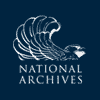George Washington to Lieutenant General Rochambeau, 3 April 1781
To Lieutenant General Rochambeau
Head Quarters New Windsor April 3d 1781
Sir
In my Letter of the 31st Ulto I informed Your Excellency, that there had been an Action between General Greene and Lord Cornwallis on the 15th of March; the particulars of which had not then been received.1 I have now the honor of enclosing the Copy of a Letter from Major General Greene, in which he gives the circumstances of that Engagement in detail:2 from this, and other Accounts, I cannot but persuade myself, (however the Enemy may have won the glory of maintaining the field of Battle) that Lord Cornwallis will find his efficient force greatly diminished by the number of killed and wounded. and that being encumbered with the latter, he will experience such embarrassments, as to retard, and injure essentially all his future Movements and Operations. This appears to have been a great object with General Greene, by a Letter of his, written some days previous to the Action.3
I do myself the honor, also, to transmit the Account given by the Enemy of the Engagement on the 16th Ulto between the fleet of His Most Christian Majesty—under the command of the Chevalier Des Touche, and that of the British under the Orders of Admiral Arbuthnot—From their confession, that three of their Ships were entirely disabled; and from their not vaunting (as they are ever disposed to do) of any considerable advantages obtained by them; it is evident they find nothing to boast of, even in their own opinion.4 I have the honor to be With the greatest consideration & esteem Your Excellencys Most Obedient Humble Servt
Go: Washington
LS, in David Humphreys’s writing, CtY-BR:R; Df, DLC:GW; Rochambeau’s French translation, CtY-BR:R; LB, in French, DLC: Rochambeau Papers, vol. 7; Varick transcript, DLC:GW.
2. The enclosure has not been identified, but GW likely enclosed a copy of Maj. Gen. Nathanael Greene’s letter to Samuel Huntington of 16 March with a full description of the Battle of Guilford Courthouse. Greene had enclosed a copy of that letter when he wrote GW on 17 and 18 March.
3. Greene had stated this objective in his letter to Virginia governor Thomas Jefferson of 10 March. Jefferson had enclosed a copy of that letter when he wrote GW on 19 March.
4. For this account of the Battle of Cape Henry, see Elias Dayton to GW, 30 March, n.3.

![University of Virginia Press [link will open in a new window] University of Virginia Press](/lib/media/rotunda-white-on-blue.png)
